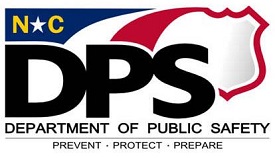
Special to Iredell Free News
GREENSBORO — Gov. Roy Cooper and his public safety team convened state leaders in education, public safety, public health and criminal justice on Monday to learn about North Carolina’s new five-year strategic plan for creating safer schools.
The “State Action Plan on School Safety,” developed during the last two years, builds off existing school safety studies by the Governor’s Crime Commission, the Center for Safer Schools, the U.S. Secret Service and information gained through public forums and meetings with stakeholders.
In a video message, Cooper welcomed the school safety stakeholders to the half-day summit held in the UNC-Greensboro Auditorium. Policy staff from the N.C. Department of Public Safety provided the attendees with a detailed overview of the new school safety plan.
“By working together to get the right services to students who need it, this partnership among state agencies, school districts and local law enforcement can help stop tragedies in our schools before they even happen,” Cooper explained. “As one of the recommendations outlined in the Task Force for Racial Equity in Criminal Justice, this plan is already having an impact in our communities.”
Attendees learned the plan began with a vison that through a Whole School, Whole Community, Whole Child approach, every school in North Carolina will be a safe school where all students can learn, all teachers can teach, and all school staff can do their work without any concerns for their well-being.
They then heard about the process that was undertaken to develop the plan and the eight guiding principles that provided direction for the plan’s development. Those principles include: actions to make schools safer should be carried out fairly and with a do-no-harm approach; the importance of preventing school violence incidents before they occur; and basing school safety efforts on available data and evidence-based practices. Attendees also learned about the plan’s five over-arching goals and supporting objectives focused on preventing, protecting from, responding to, and recovering from incidents of school violence, as well as promoting positive learning environments.
The members of the N.C. Task Force on Safer Schools will be charged with overseeing the implementation of the “State Action Plan on School Safety” and monitoring the state’s progress towards implementing its goals.
State Superintendent for Public Instruction Catherine Truitt spoke about the importance of comprehensive school safety for the whole child, community and school system in terms of mental health and public safety.
“To truly serve district leaders, staff, students, and parents, there must be collaboration and communication with those in the community,” Truitt said. “The Center for Safer Schools continues to promote and develop relationships with all stakeholders involved in student safety. Their ongoing work involves building relationships with health providers, law enforcement, emergency responders and others who are pivotal to school safety and student well-being. They are key in facilitating those relationships within districts and work with schools to create those lines of communication.”
Attendees this afternoon also received updates from the Center for Safer Schools and the Department of Health and Human Services, Division of Mental Health, Developmental Disabilities, and Substance Abuse Services. Topics discussed included school justice partnerships; a local perspective on school safety; and school resource officer training.
Reps. John A. Torbett and Ashton W. Clemmons provided an update on legislation affecting school safety.
“Providing safer schools requires strong intra-agency partnerships and communication,” said NCDPS Interim Secretary Casandra Skinner Hoekstra. “The State Action Plan for School Safety that we are rolling out today is one way to help ensure strong state and local collaboration on school safety going forward. All of us, working together, must continue to find ways to improve the safety of our children and those staff in whose care we entrust them, when we send them to school.”



